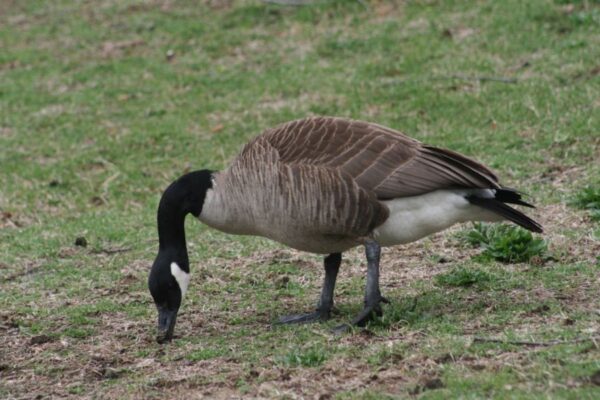Geese
5 breeding season tips for geese you didn’t know
Boosting your geese’s romantic mood
Breeding season typically picks up as winter transitions to spring, so ensuring your geese are adequately prepared can determine a successful versus unsuccessful breeding season. If you are going to pair breeding mates, it’s advisable to do so approximately 3 months before the breeding season starts, allowing them time to establish comfort with each other.
For flock mating, timing is less critical, and you can group your breeding flocks together as close as a month before the breeding season begins.
Upon deciding your breeding approach for your geese, here are some valuable tips I’ve compiled to assist your birds in getting in the mood. No, it’s not a playlist of love songs – it’s even better.
Seeking attractive company
To help stimulate your female geese’s interest, there’s nothing like introducing a bit of eye candy to get their hearts racing. Rotate out some of the older ganders with younger ones in the flock. The younger ganders showcasing their charm within the flock will excite the females, stirring uncontrollable feelings.
Younger geese generally hit their peak in fertility and egg production between 2 to 6 years old. As they approach 12 years, these factors naturally start to decline.
Experience matters
If you have older females you wish to breed, consider adding them to your younger flock. Not only does this heighten the older females’ excitement, but introducing younger, inexperienced ganders to the older ones can help teach them the ropes. This training is especially beneficial in heavier breeds, as ganders typically achieve peak fertility in their second breeding year.
This practice serves as valuable training and sets the mood for the older females when reintroduced to the flock with more experienced ganders. The introduction of young blood can certainly stir things up.
This is less crucial in lighter breeds like Chinese or Sebastopols geese, as they tend to exhibit a continual interest in mating.

Trimming off some excess weight
In the months leading up to the breeding season, consider reducing their weight slightly. Allow them more time to graze and reduce the continuous feed supply. This promotes increased mobility and energy levels. As the breeding season approaches, resume regular feeding to ensure optimal breeding condition. This enables them to accumulate the necessary minerals for enhanced egg production, fertility, hatchability, and stronger goslings. Similar to when women adjust their diets and take specific supplements before trying to conceive to promote a healthy pregnancy.
Love triangle drama
When separating a breeding pair to introduce new partners, make sure to create enough distance between the original mates to prevent them from communicating. Geese can be incredibly loyal to their initial mate. Therefore, if they can hear their original breeding partner while trying to breed with a new goose or gander, it can hinder the mood. New pairs formed may struggle to mate under such circumstances.
By maintaining sufficient space between the original pair, the chances of successful breeding significantly improve.
While not as crucial in flock mating, this practice can still influence outcomes. If old breeding partners have been separated into distinct flocks, ensure there is adequate distance to prevent communication. Sometimes, love finds a way, and if they are deeply committed to each other, it may be best to leave them be, unless the mating match-up is severely problematic.
In such cases, introducing them to a flock alongside a different gander might result in the female mating with the new partner anyway.
Kids – The mood busters
Another essential tip is to ensure that goslings hatching in an incubator are kept away from the flock to avoid distractions. We all know nothing kills the romantic mood quicker than children. Additionally, geese are highly family-oriented. If they hear goslings calling out, they will instinctively try to protect them.
Note – If seeking guard geese for new goslings, let the adults roam alongside the fence with them. Observe which ones rush in to protect the goslings, and pair them together during free-ranging to safeguard them from predators.
Pool Parties – Need I say more?
Many assume that geese require water for mating. However, this is not always the case. Geese are known to mate anywhere – in the paddock, on the road, you name it. Nevertheless, the presence of fresh water encourages more frequent mating. The water source doesn’t need to be extensive. A mere puddle in the paddock or a small kiddie pool can suffice. Geese don’t necessarily have to enter the water; witnessing their counterparts frolicking around in it can be stimulating enough, akin to teenagers at a pool party.
Conclusion
One of the common queries I receive is, ‘Do geese mate for life?’ My response often equates it to human relationships. Some geese may find a lifelong mate, while others prefer to explore various connections.
One of my earliest goose pairs exemplified remarkable fidelity. The gander, upon losing his female partner, stayed by her side on the nest without eating or drinking until I intervened. After her passing, he never mated with another goose, becoming a guardian for the subsequent goslings each year. While this scenario was exceptional, there are instances where geese form lifelong bonds.
I share this story to emphasize the importance of properly separating old pairs when mixing new pairs, facilitating a smoother process.
Don’t forget to subscribe to the Peel Ridge newsletter for more insightful tips!

